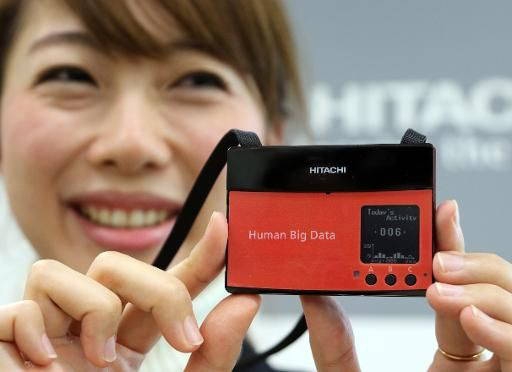The company began the month-long trial of this device on June 27 where in 600 members of Hitachi sales team were made to wear the product.
If all goes as per the plan, Hitachi will roll out its artificial intelligence based wearable device by the end of 2016. The device can monitor employee behaviour and evaluate employee’s happiness quotient. It can also uplift employees’ mood and their efficiency with personalised suggestions based on the data collected by the device.
The company began the month-long trial of this device on June 27 where in 600 members of Hitachi sales team were made to wear the product. The device which is shaped in the form a name-tag tracks and measures a variety of actions, including sitting, standing and talking and also records whom the user speaks with and how often.
After collecting the data for a month, artificial intelligence will analyse the actions that make each user happier or sad and send advice based on these findings to the user’s smartphone. Though individual users will be able to see their own data, it will be anonymised to protect privacy.
Hitachi is trying to establish whether efficiency of employees can be improved by altering their behaviour. For instance, depending on an employees’ behaviour, the new technology may recommend a time slot best suited for an employee to do desk work or have client or business meetings.
It based on the concept of 1/T rule which categorises physical activity during each unit of time as either inactive or active, and looks at the ‘active’ times when the person is moving and how long they last (called ‘sustained activity’). Activities categorised as ‘active’ include not only walking, but also small movements such as nodding or typing.
The duration (T) of sustained activity has a wide variance depending on the circumstances. What is found when looking at the distribution of T values within a group is that it follows not the ‘bell curve’ normal distribution, but rather a long-tail distribution.
It has been observed that, 30 per cent of sustained activity instances account for 70 per cent of all physical activity, with activity being skewed toward certain times or people. The name of the ‘1/T rule’ derives from the fact that, quantitatively, the probability of changing to inactivity is inversely proportional to T, and accordingly, the fluctuation in physical activity is called ‘1/T fluctuation’.
In the past, for 29 days, employees of a call centre from two different sites were made to wear this device. The call centre was engaged in cold calling potential customers trying to sell them a particular service.
The rate of daily orders differed by a factor of three depending on such things as the site or day. The main factor in this variation in results was found to be the 1/T fluctuation of physical activity, which stands for happiness.
For the reason, many of the call centre staff worked part time, the mix of people at work was different every day. The overall happiness of the staff as measured by the sensors varied between sites and from day to day.



